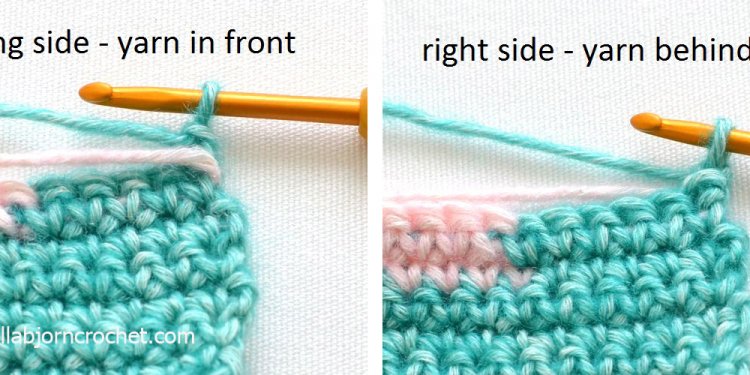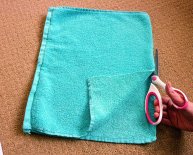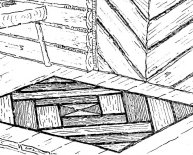
How to make a tapestry?
René Antoine Houasse (French, 1645–1710). Boreas and Orithyia from some views from Ovid's Metamorphoses, created ca. 1690, woven before 1730. Wool, silk, steel thread; H. 140 x W. 179 inside. (355.6 x 454.7 cm). The Metropolitan Museum of Art, ny, present of Francis L. Kellogg, 1977 (1977.435)
You might be walking through a museum, your mind lost in idea (your feet perhaps aching ever so somewhat), when out of the blue you appear up and see a remarkable object. You instantly begin wanting to recognize the specimen set before you decide to: it really is a fabric . . . no, it's an embroidery . . . wait . . . it is . . . the wall label says it is a tapestry! A tapestry?
If you've ever had this experience, you are not alone. Tapestries—particularly European tapestries woven ahead of the twentieth century—are reasonably uncommon, and for that reason maybe not the kinds of art generally viewed on a regular basis; therefore, once we do eventually see a tapestry, it may possibly be difficult to recognize and comprehend. Adding to the confusion is that tapestries may seem to resemble other kinds of artwork particularly paintings on fabric, murals, big drawings, or imprinted textiles.
In the face of all this work tapestry confusion, how could you know what precisely is a tapestry? We at #tapestrytuesday assembled a brief description absolutely help determine what, in fact, makes a tapestry a tapestry!
Left: style of weft-faced tapestry weave
By definition, a tapestry is a weft-faced ordinary weave with discontinuous wefts that conceal each of its warps. Just weave the warp and weft threads together, and voila—you have a tapestry! It is simply that facile! Or not. If you're shaking your face in confusion while mouthing what "weft" and "warp, " we understand.
Why don't we break it down: At its core, tapestry-weaving is a matter of easy math. Think about a tapestry as a grid made up of threads being fixed on a large frame (known as a loom). The vertical threads are generally warps, therefore the horizontal threads tend to be generally wefts. The wefts are in fact an accumulation of lots of separate pieces of wool or silk threads, all-in various colors. A tapestry is manufactured by continuously weaving the horizontal (weft) threads over and under the vertical (warp) threads, then squishing (or tamping) those horizontal threads down so they have become close collectively, therefore completely concealing the vertical threads from view.
Even though you cannot see them in a finished tapestry, the vertical warp threads tend to be essential components of each piece—they will be the anchor of any tapestry, and provide the support the weft threads. Consider the warps like a blank fabric additionally the wefts like shots of paint on that canvas. Quite simply, the weft threads are the colors which gradually develop to make a tapestry's image. Wefts do not weave inside and outside across most of the warps—they are just introduced where in actuality the design requires a patch of the certain shade. They tend to be knotted in position, their loose ends snipped off or tucked in, and another color is introduced with a new weft thread; this is why they're called "discontinuous wefts." The picture below illustrates the complex assortment of colored weft threads partially woven onto the warp, dangling down and mounted on wood spools (or "shuttles") visible from the reverse of a tapestry during weaving.
View associated with straight back of a tapestry being woven on a low-warp loom
Since the colored wefts completely cover the warps, the figurative design they've developed are going to be visible in the front side and back of tapestry. For example, the images below program leading and back of a tapestry: the back, shown at the top, is almost because neat at the front, shown regarding the bottom. Observe how the back of this tapestry is much more colorful compared to the front side; a tapestry's back, since it is rarely confronted with sunshine, is usually less faded than its front.
Anonymous Flemish weavers. (details; as well as forward), ca. 1575–95. Wool, silk; H. 70 7/8 x W. 181 7/8 in. (180 x 462 cm). The Metropolitan Museum of Art, ny, Purchase, Walter and Leonore Annenberg Acquisitions Endowment Fund, Rosetta Larsen Trust present, and Friends of European Sculpture and Decorative Arts Gifts, 2009 (2009.280)
Tapestries, though they might appear to be they've been constructed from brushstrokes, aren't coated. Indeed, using paint on the surface of a tapestry had been as soon as considered a crime punishable by a sizable fine or even worse. Though occasionally a tapestry's fundamental weave is modified a little so as to copy, although not replicate, the look of other forms of fabrics particularly silks, damasks, velvets, or embroidered textiles.
Historically, weavers worked while facing exactly what would be the back of the tapestry. They copied making use of their colored weft threads the tapestry's design. The style, described as the "cartoon, " took the type of a painting—made on cloth or report, equivalent size once the in the offing tapestry. This cartoon had been either temporarily connected to the loom, flush against the backs of warp threads, and noticeable in the gaps involving the warps; or it had been hung regarding the wall surface behind the weavers, whom adopted it by examining its reflection in a mirror behind the warps. Because weavers copied the cartoon dealing with regarding the straight back associated with the tapestry, if the piece had been completed, taken from the loom, and switched around to show the front, the woven image from the front of tapestry had been the mirror picture associated with the cartoon shown. Weavers could stay away from this reversal associated with the design utilizing the mirror solution to copy the cartoon's design. The cartoon wasn't actually part of the finished tapestry, and might be used again multiple times to make duplicate tapestries.
Tapestries were woven yourself for centuries, but belated nineteenth- and early twentieth-century technological innovations introduced the chance of machine-woven tapestries. Today, workshops and manufactories nevertheless produce hand-woven and machine-woven tapestries. Some tapestry weavers still stick to the traditional procedure, copying a painted cartoon; various other tapestry weavers just take complete innovative control, also improvising their design as they weave.
Associated Links
The Unicorn Tapestries: Weaving a Tapestry interactive feature
European Tapestry manufacturing and Patronage, 1400–1600 on Heilbrunn Timeline of Art History

















